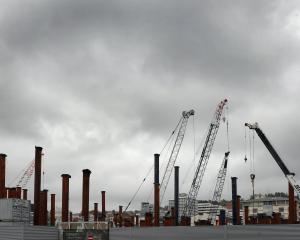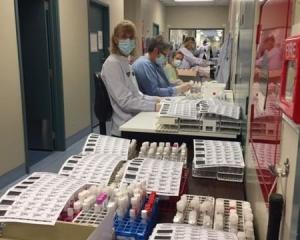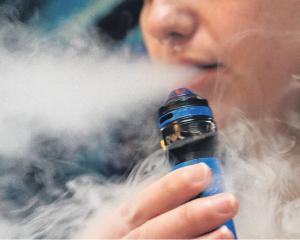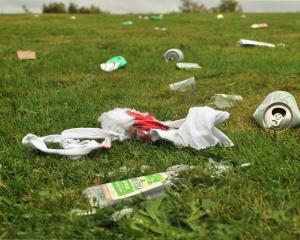Almost all of Wakari Hospital's mental health facilities are not fit for purpose, pose safety risks to patients and staff, and hinder appropriate treatment of patients, a critical report of the facility says.
The Southern District Health Board accepts that many of Wakari's buildings are not fit for purpose and has been exploring options to upgrade and replace them.
However, a confidential report supplied to the Otago Daily Times stresses the pressing need for action, with several buildings approaching the end of their functional lives.
Two inpatient wards, 9c and 10b, were of a suitable standard and design, but 9a, 9b, 10a and 11 all needed urgent attention, the report by Sapere Research Group said.
Ward 10a, which houses forensic and intellectually disabled patients, had multiple serious issues which required work.
"Despite lower occupancy rates, the ward has the highest rate of incidents in the DHB and also the highest staff injury rate,'' the report said.
"The not-fit-for-purpose facility is a major contributing factor to these events.''
Issues with 10a included very narrow corridors which could become blocked if two doors were open at the same time, and a lack of a suitable ``de-escalation area.''
"The ward is very noisy and this is a large trigger for some patients,'' the report said.
"For instance, the food trolley has to go through the corridor before getting to the kitchen.
"This acts as a trigger event for some patients, which in turn often result in restraints and seclusion events.''
Almost all inpatient wards had issues with ventilation, the buildings being too hot in warm weather and too cold in winter.
None of the buildings had designated visitor areas, wheelchair access was problematic, and most had inadequate staffing areas and office spaces.
"The sheer number of facilities that need urgent attention on the Wakari site'' meant the SDHB should develop a business case to examine what services were adequate, where they should be located, and whether any services needed to be added or removed, the report said.
SDHB chief executive Chris Fleming said the board had commissioned the report as an "initial stocktake'' of the state of its facilities.
"We are well aware that a number of the mental health, addictions and intellectual disability facilities at the Wakari site are far from ideal, and we acknowledge the great efforts of our staff to provide good care in these environments.
"While we are limited in terms of how much the existing buildings can be modified, we are continuing to do what we can to improve them for patients and staff.''
Facilities for mental health and addictions services were not within the scope of the new Dunedin Hospital project, but the SDHB knew it was an area where further attention was required, Mr Fleming said.
"We are still considering the best way to progress this in the context of the overall work we are doing to reshape the health system ... we will also be using the information to support our decisions as to whether we should be upgrading the existing facilities over coming years or whether to focus on a longer-term substantive replacement business case.
"The long-term solution may involve elements of both.''
Mental health facilities
Inpatient services
- Ward 9a: Medium secure forensic unit, 13 beds, two seclusion rooms. Blind spots, lack of space and natural light, insecure entry, many safety issues.
- Ward 9b: Acute locked and intensive care unit, 17 beds, two seclusion rooms. Insufficient and inflexible spaces, no quiet areas, building services need replacing.
- Ward 9c: Acute ward, including two youth beds. 16 beds, In good state after 2011 refurbishment.
- Ward 10a: Medium secure unit, 13 beds, one seclusion room. Blind spots, narrow corridors, thin walls mean little privacy, very noisy, staff safety issues.
- Ward 10b: Purpose built community secure unit, 4 beds. No significant concern.
- Ward 11: Clinical rehabilitation and overflow ward, 16 beds. No access outside, insufficient space, limited office space.
Outpatient services
- South Community Mental Health
Team: Fit for purpose. - Community Alcohol and Drug
Service: Narrow entry and waiting room pose significant safety risk, layout not fit for purpose, roof and plaster in poor condition. - Community Forensic Service: Poorly configured, leaking roof, privacy and safety issues.
- Te Oranga Tonu Tanga (Maori mental health team): Built 1958, requires substantial refurbishment.












